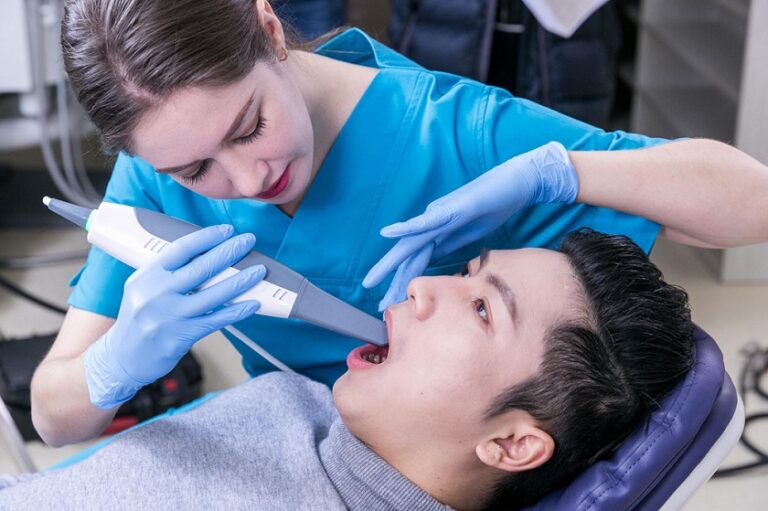A new generation of intraoral scanning devices offer significant improvements over the time-consuming, messy, and inconvenient methods of oral modeling. These new technology-based dental scans have helped a surprising number of dentists achieve excellent results while reducing the number of appointments and procedures. However, the process of making an intraoral model may not be the best choice for everyone. Listed below are some of the advantages and disadvantages of intraoral scanners.
A high-quality dental intraoral scanner will capture images at a rate of about 40 milliseconds. This will give you ample time to design a patient’s new smile. Generally, an intraoral scanner is available in full desktop PC, cart, laptop, or briefcase versions. There are also models with touch screens for clinicians to see the results of their scans. A high-quality scan can help a dentist to make the right decision for each individual patient.
Offer real-time feedback
An intraoral scanner provides high-quality, 3-D images that can be shared with a dental laboratory. This helps improve communication between the dentist and patient, as well as minimize chair time. Additionally, most intraoral scanners offer real-time feedback. Some of the latest models can also generate true-colour models that enable the clinician to detect subtle shades of tooth and gingiva in the patient’s mouth. In addition to its benefits, an intraoral scanner can help dentists improve the efficiency of their procedures and reduce the amount of chair time required to complete a treatment.
Feature color and texture
An intraoral scanner has several advantages. Besides enabling better communication between a dentist and dental technician, it allows the patient to take an additional impression. It also allows the dentist to share scanned images with a lab, which can give the doctor timely feedback on the results. Most new intraoral scanners also feature color and texture, which improve the clinician’s perception of the clinical situation and the volume of the teeth and gingiva.
The technology used in intraoral scanners is highly advanced. Its benefits go beyond the obvious benefits of enhanced patient comfort. The intraoral scanner has the advantage of allowing doctors to see a 3-D picture of the patient’s mouth. This allows them to discuss the possible treatments with their patients. The system also makes it possible to send scans to a lab, which can give immediate feedback. Moreover, the intraoral scanners support a wide range of file formats.
Improves the quality
An intraoral scanner improves the quality of dental care and the relationship between the dentist and patient. The digital scans can be stored in the patient’s file and used for diagnosis. A chairside intraoral scanner also allows the dentist to view images of the patient. CAD/CAM images can help the patient better care for themselves by teaching them how to properly brush and floss their teeth. They can also aid in detecting problems before they lead to tooth decay.
An intraoral scanner has several advantages. First, it allows the dentist to view the design of a patient’s new smile. The scanner’s low-powered motor can be used to scan a large area of the mouth, such as the entire face. Secondly, an intraoral scanner can be portable, meaning that it fits into the trunk of a vehicle. It can also be used in a wheelchair and is often a mobile unit.
Also know about hyperbaric chamber for animals.
Specialized software
An intraoral scanner is a small, smooth wand that attaches to a computer. The computer runs specialized software to record the digital data sensed by the wand. A smaller wand will cover more areas of the oral cavity than a larger one, which means it will capture more accurate data. In addition, a smaller wand will not cause a gag response in patients. Similarly, it will not cause the patient to open their mouth wide, which may aggravate some patients.
An intraoral scanner is useful for diagnosis and treatment planning. Its digital impressions can be used to create customized orthodontic appliances. In the future, all orthodontic appliances will be designed using an intraoral scan. This technology is beneficial for both patients and doctors. Its benefits are numerous. Aside from improving communication between the clinician and the dental technician, an intraoral scanner also improves patient trust in the dentist. It can also help the dentist assess the extent of the condition of a patient’s oral cavity and determine if the treatment is necessary.

